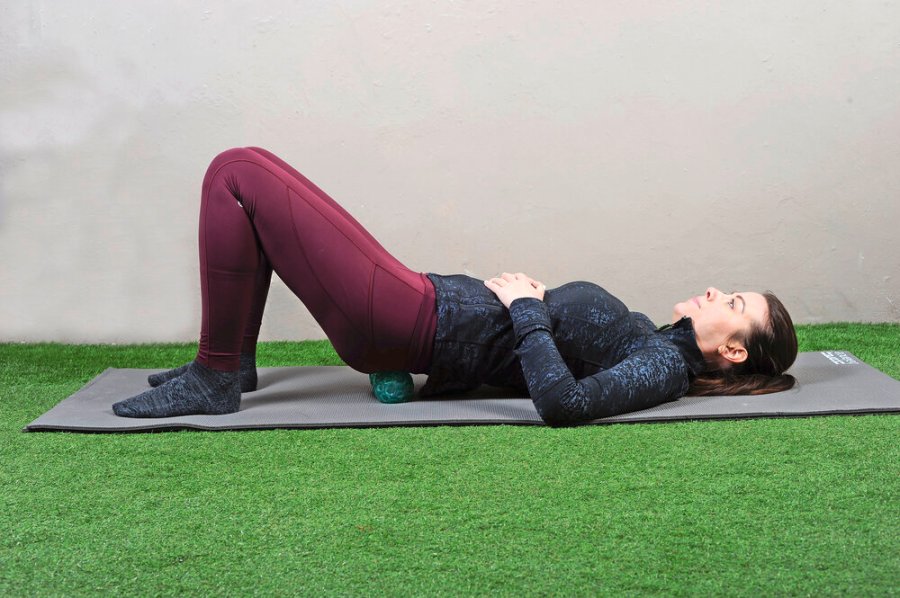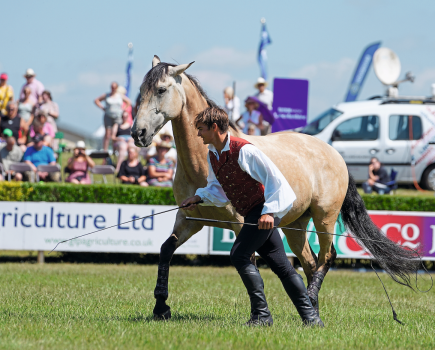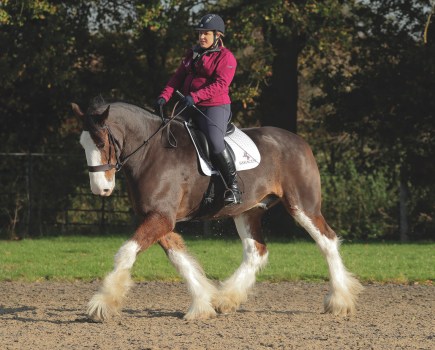An effective seat will improve your communication and enable you to follow your horse’s every move with ease. You’ll feel more secure and confident when you’re in the saddle and your horse’s trust in you will also increase tenfold — bonus!
Alysen Starko-Bowes, head of Franklin Method Equestrian, explains that to train your pelvis and seat, you want the muscles to be supple and flexible.
You also want them to be strong and supportive in a dynamic way.
The benefits
- Having control over your pelvis and seat is vital for maintaining a correct and effective position in the saddle.
- It also makes it much easier for your horse to carry you and move freely. Increasing your awareness of your pelvic muscles and working to strengthen your pelvis and seat will lead to more harmonious communication with your horse.
- This will also allow you to balance without gripping with your inner thighs, making you more secure.
- Plus, by becoming more conscious of your body and having better control of your pelvic floor muscles, you’ll be better able to follow your horse’s movement and your aids can become more sensitive and subtle too.
- Using a number of different Franklin Method Equestrian exercises will help to reduce tension in your muscles and also develop proprioception (the ability to sense your body’s position and movement).
Exercise 1: Relieve muscle tension
Lie down on your back with your knees bent. Take a moment to establish your base line, making a note of how your pelvis and lower back feel as you lie there. Now place two balls at the back of your pelvis.
- Move your pelvis around over the balls to massage the area. Duration: 2-3 minutes
- Now tilt your pelvis forwards over the balls.
- And then roll your pelvis backwards over the balls. Repetitions: 15
- Remove the balls and notice how your pelvis and lower back feel.
Exercise 2: Work your pelvic muscles
The aim of this next exercise is to create some instability, so the muscles in your pelvis area will need to become more active in order to stabilise you.
Still lying down with your knees bent, place a ball under each foot (you can also use two thick bunched-up socks).
- Lift your pelvis up and into a bridge position. Squeeze your seat bones together as you come up.
- Slowly lower your pelvis down. Relax your seat bones and allow them to move apart as you bring your pelvis back down to the floor.
Repetitions: 8
Exercise 3: Discover your seat bones
You’ll need a hard chair for this seated ball exercise. Sit on the chair with your knees bent and your feet flat on the floor.
Take a moment to notice how your pelvis and seat bones feel. Place one ball under one of your seat bones.
- Gently move and massage the ball over your seat bone. Duration: 30 seconds to one minute.
- Shift your weight up onto the ball, squeezing your seat bones together as you do this.
- Slowly lower yourself back down again allowing your seat bones to move apart. Repetitions: 10-12
- Remove the ball and notice the difference between each of your seat bones.
- Repeat the sequence with the ball under your other seat bone.










